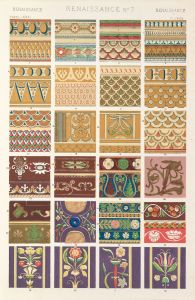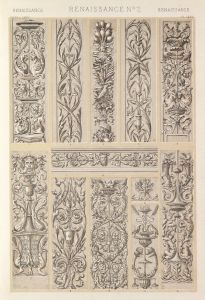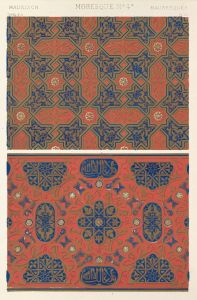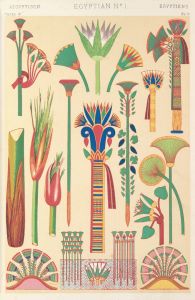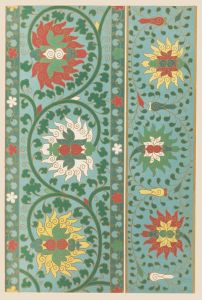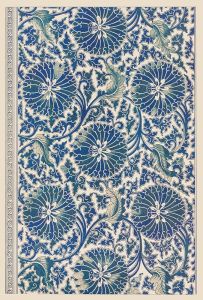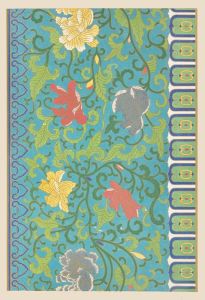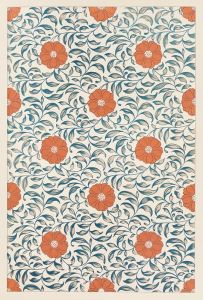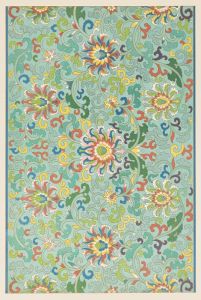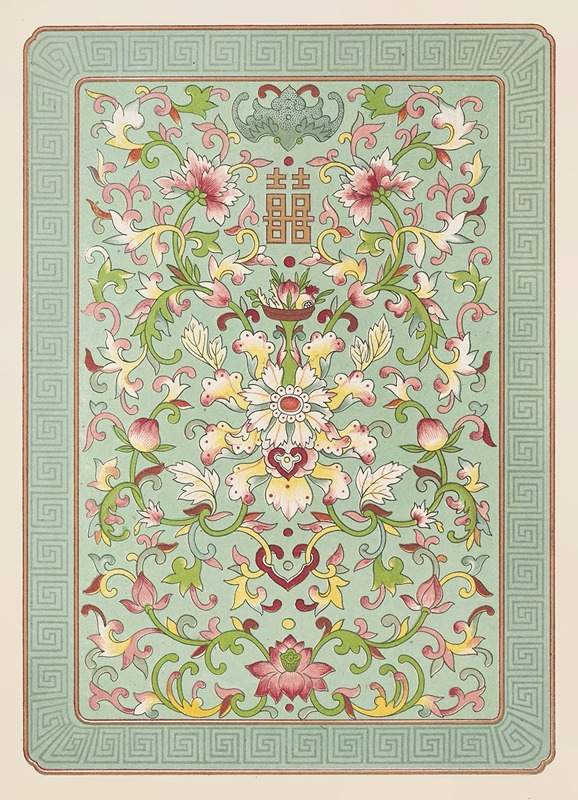
Examples of Chinese ornament, Pl.14
A hand-painted replica of Owen Jones’s masterpiece Examples of Chinese ornament, Pl.14, meticulously crafted by professional artists to capture the true essence of the original. Each piece is created with museum-quality canvas and rare mineral pigments, carefully painted by experienced artists with delicate brushstrokes and rich, layered colors to perfectly recreate the texture of the original artwork. Unlike machine-printed reproductions, this hand-painted version brings the painting to life, infused with the artist’s emotions and skill in every stroke. Whether for personal collection or home decoration, it instantly elevates the artistic atmosphere of any space.
"Examples of Chinese Ornament, Pl.14" is a design plate created by Owen Jones, a prominent British architect and designer of the 19th century. This plate is part of his influential work The Grammar of Ornament, first published in 1856. The book is a comprehensive study of decorative art and design, showcasing patterns and motifs from various cultures around the world. It aimed to serve as a reference for artists, architects, and designers, promoting the use of historical ornamentation in modern design.
Plate 14 specifically focuses on Chinese ornamentation, reflecting Jones's interpretation of traditional Chinese decorative art. The designs in this plate are characterized by intricate patterns, vibrant colors, and symmetrical arrangements, which are hallmarks of Chinese aesthetic principles. The motifs often include stylized floral patterns, geometric shapes, and symbolic elements that were commonly found in Chinese art and architecture.
Jones's work was heavily influenced by his belief in the importance of studying and understanding the design principles of different cultures. He sought to highlight the universal beauty and functionality of ornamentation, emphasizing the harmony between form and color. In the case of Chinese ornament, Jones admired its balance, precision, and the way it integrated natural elements into decorative forms.
It is important to note that the designs in The Grammar of Ornament were not direct reproductions of original Chinese artwork but rather interpretations and adaptations based on Jones's studies and available sources at the time. His work was shaped by the 19th-century European perspective on non-Western art, which often involved a degree of simplification or reinterpretation.
The Grammar of Ornament remains a significant resource in the study of design history, and Plate 14 serves as an example of how Chinese decorative art was perceived and appreciated in Victorian England. However, modern scholars recognize the need to approach such works with an understanding of their historical and cultural context, acknowledging both their contributions and limitations in representing the original traditions they sought to depict.





